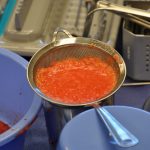The idea of using one’s own tissue to heal thyself has been a romantic medical goal for decades. Plastic surgeons have long employed this approach by moving body parts around beginning with skin grafts a century ago to microvascular tissue transfers more recently. But taking individual cells and having them grow or turn into new tissues in a human body is far more challenging. Such an approach, however, is a hot topic of almost all medical specialties today.
Because of plastic surgeons’ familiarity with fat, from composite grafts to liposuction, the use of autologous fat-derived adult stem cells is being looked at for many medical applications. Plastic surgeons are interested in its promise for cosmetic face, breast, and hand rejuvenation, post-lumpectomy breast reconstruction, as well as in the repair of burned or irradiated tissues. But their use is promising for other medical areas as well including the treatment of damaged heart tissue, salvage of diabetic and poorly vascularized limbs, and maybe even to grow new bone or nerves.
In the recent issue of Plastic Surgery News, an article looked at the impact plastic surgeons involved in stem cell research are having in this frontier area of medical research. From a basic science standpoint, there is no question that fat contains a lot of stem cells and isolating them in a petri dish has not been difficult. How to implant them, have them survive, and turn into the type of tissue you want are the hot beds of fat-derived stem cell research. Delivery and activation are the keys. Most feel that a biodegradable scaffold or matrix is needed although current clinical work employs the fat itself as the carrier and matrix. Its simplicity is appealing but unproven as the optimal method. Much of the biology of fat stem cells is more theoretical than proven as of yet. No one knows the long-term safety of using these cells or even if they are capable in humans of turning into the tissues that one wants. Despite the amount of scientific activity that is ongoing, more rigorous studies of any proposed techniques are needed.

One of the biggest issues with fat grafting is the lack of standardization of donor site, preparation, and injection techniques. Because different fat grafting methods are used by various plastic surgeons for a wide range of applications, it becomes difficult, if not impossible, to know the exact biologic effects that fat grafts are causing. And why in many cases they don’t work as expected or hoped. Even in my own Indianapolis plastic surgery practice, I will often mix PRP (platelet-rich plasma) with fat grafts in the theoretical belief that the higher concentration of growth factors will improve graft take through cellular stimulation.. But is this hope or reality? This alchemy concept only further muddies fat and stem cell’s unknown science.
The potential to treat certain plastic surgery problems in a less invasive manner, using the body to heal itself so to speak, is in some ways an almost holistic approach. While this stretches the definition of holistic medicine, fat grafting and stem cell applications will ultimately define a niche in medicine. It will certainly change the approach that plastic surgeons take to some of our aesthetic and reconstructive problems. It is just going to take more time and scientific effort to reap the benefits of current ongoing work.
Dr. Barry Eppley
Indianapolis, Indiana


